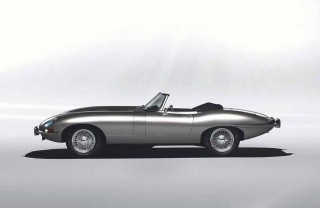BREAKTHROUGHS ARE NOT ONLY ABOUT TECHNOLOGIES, OF COURSE. CARS EVOLVE AS TYPES, TOO – E-type Zero
Breakthroughs are not only about technologies, of course. Cars evolve as types, too. In the Sixties, we saw the first fledgling hatchbacks, before the onslaught arrived in the Seventies and Eighties. The Eighties also saw the arrival of MPVs with the Renault Espace (E-Space ?), these sensible-shoes machines fading in favour of the SUVs and crossovers that these days are also killing hatchbacks. In an effort to maintain sales, car-makers have dreamt up just about every viable bodystyle so far – SUV coupe, anyone? – leaving few mutations unexplored. Powertrains have provided further variations of course, from hybrid to full-electric to hydrogen fuel-cell electric.

Despite well over a century’s worth of automotive innovation so far, Jaguar appears to have scored another first, with the announcement that it is to put its electric E-type into limited production. The world first here is the novelty of an electric car created around an obsolete model from a mainstream manufacturer. Whatever you think about massively modifying a classic like this, you have to admire the imagination behind it, and the boldness. Those concerned about sacrificing the originality of an E-type will be pleased to hear the conversion has been engineered to be fully reversible.
And, from an engineering perspective, there is something peculiarly satisfying about the way this E-type’s new power source has been arranged. The battery pack sits where the XK engine would have been, its modules derived from the Range Rover P400e hybrid’s, but of greater energy density. Meanwhile, the electric motor occupies the transmission tunnel to send drive to the rear wheels via a single speed reduction gear. Fortuitously, the location of these new components does little to disturb the E-type’s weight distribution.

More than that, the Jaguar E-type Zero, as it’s officially called, is very slightly under the weight of its petrol-powered equivalent, as the electric powertrain and battery weigh slightly under 300kg. The happy result of that is there’s no need to alter the car’s spring and damper rates, nor to uprate its brakes. The electric powertrain weighs less than some of this breed because there’s no fast-charging facility, in contrast to the I-PACE, Jaguar concluding that it’s less necessary when this car is a source of entertainment rather than essential transport. So a 7kW wall-box needs a not-too-terrible five hours for a recharge worth around 150 miles in normal use, the batteries doing without the weighty and expensive cooling system required by the fast-charging I-PACE. Jaguar has even used the E-type’s fuel filler as the site for the recharging socket, although this may be relocated to the front nearside, where most EV sockets are housed. And the spare wheel well houses some control electronics. It’s all very neat, and looks it, too.
Unless you open the bonnet, then, the biggest visual deviation from the standard car is to be found inside, the dashboard presenting electronic instruments and a touch screen infotainment system within the original structure. The touch screen allows the power output to be limited, a wise precaution given the 190kW motor’s ability to deliver 331lb ft of instant torque to rear wheels scaled for rather lower levels of thrust. Apart from this feature, there are no modern safety nets, such as traction control, ABS or ESP. Nor are there airbags, of course. In terms of primary and secondary safety, then, this E-type is entirely authentic. It’s not cheap, either. Actual prices for this low-volume car have yet to be confirmed, but £300,000, including an E-type in decent condition, is the rumoured price for an extremely unusual and rather appealing machine.





